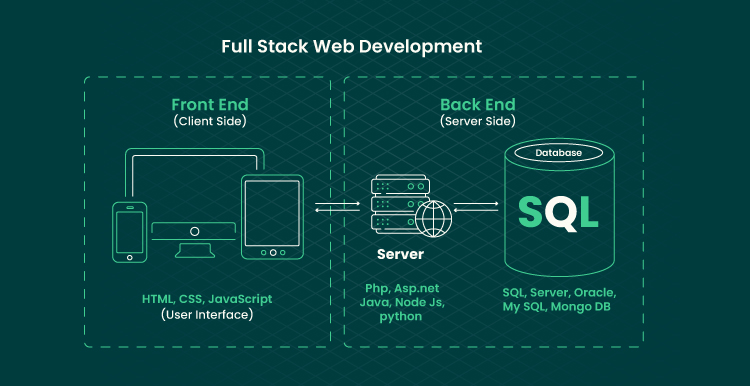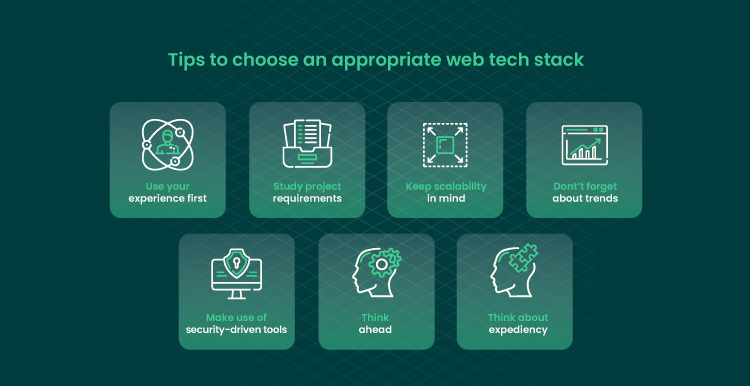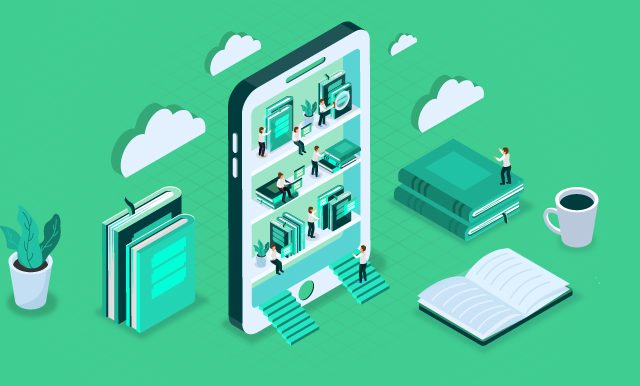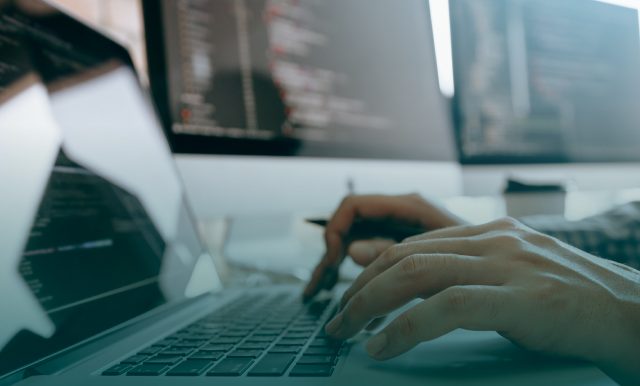From desktop computers to IoT, the world’s technology is built around a series of layers of discrete platforms. The technology stack is the hierarchy of components that connects these platforms. The purpose of a technology stack is to allow components to be used interchangeably in an efficient manner without the need to recreate or rewrite them every time.
But technology is continually evolving. Businesses want to adopt the latest advancements but can’t keep up with all the news and changes. If you’re a business owner or project leader or simply need a better idea of what technologies to explore, this article may be for you.
Let’s start our discussion with the question “What is a tech stack?”
What Is a Tech Stack?
A technology stack is a collection of tools, frameworks, and other technologies that help develop, deliver, and maintain software. It typically contains components designed for specific purposes. For example, the Microsoft SharePoint technologies stack contains Microsoft’s social software, collaboration tools, and document management tools for convenient work and cooperation with colleagues.
A complex software development project will have a technology stack that consists of many different aspects. The aspects making up that stack will change depending on the needs of the software project. For instance, the smartphone, operating system, and app store create a technological stack that provides a complete user interface.
An engineering team builds a website or application by assembling different technologies into a cohesive whole. Tech companies use stacks to reduce dependencies and build modular solutions. For web developers, the foundation of a technology stack includes programming languages, runtimes, data processing tools, operating systems, distributed system tools, and database tools.
What Are Some Common Technology Stacks?
Tech stacks – the discrete layers of the technology behind software product development – are the foundational building blocks of a company. Providing the development team with a tech stack that suits your company’s needs is of utmost importance.
Namely, the front-end (client-side) tech stack is usually comprised of the following key elements:
- HTML (HyperText Markup Language);
- CSS (Cascading Style Sheets);
- JavaScript (programming language of the Web).
The back-end (server-side) tech stack generally includes:
- Java (general-purpose, class-based, object-oriented programming language);
- Node.js (an open-source server environment);
- SQL Server (a relational database management system).

Of the many recognizable tech stacks, we may mention the following few examples:
- Java & Spring: Java programming language is a compiled and statically typed programming language. Spring framework is an open-source Java application framework that simplifies the development and maintenance of dynamic applications. Spring is a Java framework that has evolved from the former web app framework Strato/Tiger/Tomcat in addition to other Java frameworks.
- LAMP: LAMP stands for Linux, Apache, MySQL, and PHP. It is a collection of open-source software maintained for use by web servers that provides an easy-to-configure, reliable way to deliver dynamic, interactive web pages. A high level of security and flexibility is the main reason LAMP is so popular among web developers. (See LAMP architecture by IBM below).

- MEAN/MERN: The MERN stack (a model for web development) is one of the most popular stacks since Node.js exploded onto the scene. MERN stands for MongoDB, Express.js, React, and NodeJS. MongoDB is a highly scalable database for storing raw data. Then there’s Express.js, the web application framework. React is a JavaScript library that allows developers to create quick-loading, interactive user interfaces without writing HTML.
- Node.js, GraphQL, and React: Many developers explore newer, cutting-edge tech stacks like NRG. An interesting part of this synergy is GraphQL – this is a relatively new technology that rapidly changes the way apps are built. Some companies use it to build both backend and frontend apps, while others use it mainly for backend goals.
- Ruby on Rails: Ruby on Rails (also referred to as Rails) is a web application framework written in Ruby. It includes generators, domain-specific languages and libraries, and developer-friendly tools that help speed the development of applications.
The Difference Between Web and Mobile App Tech Stacks
What is a technology stack for web and mobile development? Web and mobile app technology stacks are superficially similar, but each has some specific nuances and strategies worth taking into account.
Technology stack meaning can be universal. Whether you want to create a server or a web stack, you have to separate your stack’s different components and layers either way. However, the process of using a technology stack for app building is different from the process of creating a technology stack solely on the basis of the intended functionality of your app. Similarly, the structure of mobile and web applications has fundamental distinctions.
The three major differences between mobile and web development stacks include:
- Multi-channel functionality: Mobile app developers should optimize applications for multiple channels. This includes developing a consistent and engaging app user experience across different channels.
- API integration: Equally important is how your mobile technology stack interacts with your smartphone’s background API. The API represents a set of protocols for combining various programs with internal software. An example of an API in the smartphone environment is a tool that allows you to detect the touch screen. For this level of integration, mobile application developers need to create technology stacks that share common capabilities.
- Main smartphone services: Mobile applications should work with the typical features of a regular smartphone, such as locations, offline support, pop-up messages, and safety protection. These features exceed the web application requirements. Therefore, developers are responsible for improving their mobile technology stack to operate according to these features.
Why Technology Stacks Are Important
Leading tech companies like Facebook, Amazon, Google, and Netflix use a diverse range of data sources and software stacks. It enables them to foster data based decision making, create innovative and unique products, and drive the digital revolution. Technology stacks are used to simplify the lives of developers and businesses. They also make it convenient for companies to deliver a comprehensive experience to their customers and build a product that is easy to navigate, learn, and use.
Tech stacks are important because:
- A broad and flexible stack helps manage software applications, enabling you to design, implement, and improve systems while launching products on time, within budget, and within your schedule.
- Stacks are helpful for organizing principles; they can help you manage the inherent complexity of your existing technology and make better decisions in the future. They can help prioritize technology options, create clear guidelines and budgets, and identify corporate priorities.
- If you’re an early-stage startup with the right technology stack, you can start quickly and save time and money when getting your product to market.
The choice of technology stack doesn’t always come down to cost or convenience but rather the system on which the product or service is running. Compatibility for one technology may need to be taken into account for a variety of other factors. But the composition of a tech stack is just a starting point. Your tech stack must change according to your challenges, expertise, and specific needs.
Choosing the Right Tech Stack
So many things come into play when deciding which technology stack is suitable for the business: software vendors, application requirements and specifications, coding abilities, company culture, company techniques, and resources. It not only has to be easy to use, but it also has to integrate well with existing systems and offer features and functionality that help improve a company’s bottom line.
Most new tech companies start with limited resources and must prioritize the technology that will be included in their stack. Each technology stack is adopted for a specific task. Oftentimes it might include:
- the components necessary to create or maintain a website or mobile app;
- customer support;
- warehouse management and manufacturing;
- finance;
- communications;
- marketing.
That’s a lot to deal with, isn’t it?
The most common approach to choosing a technology stack for web development is to go with a specific framework that aligns with your broader business objectives. The right software must align with the company’s targeted industry. But you also need to pay attention to the tech part: learn architecture, what platforms each tech stack integrates with, and how its ecosystems can help you improve your project.

Example: Let’s say you are a marketing company. The ideal technology stack is determined by your content creation process, the type of content, your audience, and your existing technology. If you are creating a report, the ideal stack might include reporting software and a content management system to track your completed work. If you are creating a blog, the ideal stack might include a WordPress platform and mailing list management software.
Consider the factors listed below when choosing a technology stack for your project.
System Requirements
Focus on your system needs when choosing a tech stack. One of the important ones is capacity. Some programs may require severe number convolution. This may create a need for a technology stack to build a scalable system for experienced systems admins. Their goals will be to maximize their data ingest, backup, and restore and have an easy time scaling their system.
Speed is another important factor to consider. For websites, specifically those with huge databases, speed is critical. That is why tech stack components should be powerful enough to ensure optimal speed performance. When optimizing it, the technology stack refers to cloud server software, cloud data storage, and any other related services. Best practices for website optimization include compression, caching, and minification.
Goals and Needs
Start with your product’s concept and the functionality you will build to bring that idea to life. For instance, if you build a simple mobile game, you can use the most topical frameworks and stacks for its development. However, if you decide to create a novel game based on augmented technologies, you will require a much more powerful and advanced technology stack (similar to those that Google uses.)
It is necessary to assess your product and the technology you use both from a strategic and a technical side, weighing in on potential benefits and drawbacks. For example, you might want to make sure a particular technology supports your brand’s standards and positioning. Familiarize yourself with a technology’s big players and community of adopters before making the final decision.
Team Skills and Background
Nowadays, it’s not uncommon for developers to have experience working with different tech stacks. But this mainly concerns those framework languages and libraries that have been around for quite a bit. If you want to try new advanced ones, it’s great, but take into account that your team may not be familiar with them. Hence, you will have to spend time and resources on educating your developers. Think twice if you need it and can afford it.
Customer Expectations
Your users come to expect a certain level of quality. Enhancing the experience of a customer can mean different things to different businesses. For some, it might be a simple improvement to a website, while for others, it might mean building entirely new features into the digital product. One thing’s certain – user satisfaction stimulates demand and drives your business to the top. You need to employ a tech stack that ensures supreme quality experience and allows you to update apps quickly and easily.
Costs
Estimate the total cost of the technology stack with projection for future updates and work with bugs. Spending more funds on ready-to-use technologies can help you build a product faster but can compromise your future customizations. Find a flexible, adaptable technology stack that allows for faster development and deployment, which, in turn, allows for a lower cost of maintenance and low switching costs.
Security
Cybercrime is a growing and thriving trend. Your business has to be prepared for every threat to stay safe. Whatever tech stack you choose, it won’t be immune to all hacker attacks. So, your task is to find the best one and prioritize customer data safety. Advanced technology, which allows for optimal speed, can be less tested against vulnerabilities. You can choose a less performant but more security-efficient stack and be safe and sound about your cybersecurity.
So, choosing a tech stack is a delicate balance of costs, capabilities, and permanence. When deciding on a particular language or tool, you often have to make trade-offs based on your company’s size, needs, and existing tech. Remember these three crucial things when picking a tech stack for your business:
- Technologies come with different licensing models, startup costs, development time, and data analytics. There are also strategic and tactical requirements, along with compatibility with other solutions.
- For startups, one of the most important aspects to consider is scaling. A possible reach and customer base are essential to a company’s growth potential.
- For software developers, smaller is better. More granular tools allow for more robust functionality, and more powerful functionality is less complex and more maintainable.
Final Word
What is tech stack? At its core, a tech stack is a list of technologies that will help you achieve your business goals. Every company has a different set of business objectives, which often dictate what tech stack is the best for them. It’s never a bad idea to do a little research before settling on a tech stack. It could save you time and money down the line with fewer headaches and lesser bugs.
But if you need help with that, contact us, and we’ll gladly help you!

Our Engineers
Can Help
Are you ready to discover all benefits of running a business in the digital era?

Our Engineers
Can Help
Are you ready to discover all benefits of running a business in the digital era?







